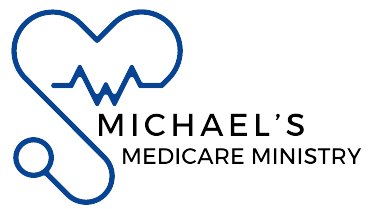For first-time Medicare enrollees, navigating the complexities of this federal health insurance program can feel overwhelming. With its various parts, enrollment periods, and coverage options, it’s natural to have questions. This blog addresses the top five questions most commonly asked by those new to Medicare, helping you make informed decisions and avoid costly mistakes.
1. What Are the Different Parts of Medicare?
Medicare consists of four main parts, each serving a specific purpose:
Medicare Part A: Hospital Insurance
- Covers inpatient hospital stays, skilled nursing facility care, hospice care, and some home health services.
- Most people qualify for premium-free Part A if they or their spouse have paid Medicare taxes for at least 10 years.
Medicare Part B: Medical Insurance
- Covers outpatient services, doctor visits, preventive care, and durable medical equipment.
- Requires a monthly premium, which starts at $174.70 in 2024 and may vary based on income.
Medicare Part C: Medicare Advantage Plans
- Offered by private insurers, these plans combine Parts A and B and often include additional benefits like vision, dental, and prescription drug coverage.
- May have lower out-of-pocket costs but requires using in-network providers.
Medicare Part D: Prescription Drug Coverage
- Helps cover the cost of prescription medications.
- Offered through private insurance companies and can be added to Original Medicare or included in a Medicare Advantage Plan.
Understanding these parts is the foundation for selecting the right Medicare coverage.
2. When Can I Enroll in Medicare?
Timing is crucial when enrolling in Medicare to avoid late enrollment penalties or gaps in coverage. Here are the key enrollment periods:
Initial Enrollment Period (IEP)
- A seven-month period starting three months before your 65th birthday month and ending three months after.
- Example: If your birthday is in June, your IEP runs from March to September.
Special Enrollment Period (SEP)
- For individuals delaying enrollment in Part B due to employer-sponsored health insurance.
- You have eight months to enroll after losing employer coverage.
General Enrollment Period (GEP)
- Runs from January 1 to March 31 each year for those who missed their IEP.
- Coverage begins July 1, but late enrollment penalties may apply.
Annual Enrollment Period (AEP)
- Occurs from October 15 to December 7 each year.
- Allows current enrollees to switch plans or make changes to their coverage.
Knowing these periods ensures timely enrollment and prevents unnecessary costs.
3. What Does Medicare Cover (and Not Cover)?
Covered Services
Medicare provides broad coverage, including:
- Part A: Inpatient hospital stays, skilled nursing care, and hospice services.
- Part B: Outpatient care, preventive services, and durable medical equipment.
- Part D: Prescription medications, depending on the plan’s formulary.
Services Not Covered by Original Medicare
Original Medicare (Parts A and B) does not cover:
- Routine dental, vision, and hearing care
- Long-term care (e.g., nursing home care)
- Cosmetic procedures
- Acupuncture
- Prescription drugs (covered under Part D or Medicare Advantage)
Many enrollees choose to supplement Original Medicare with Medigap or Medicare Advantage Plans to address these gaps.
4. How Much Will Medicare Cost Me?
While Medicare reduces healthcare expenses, it’s not entirely free. Here’s a breakdown of common costs:
Part A
- Premium: Free for most; up to $506/month if you’re ineligible for premium-free Part A.
- Deductible: $1,632 per benefit period in 2024.
Part B
- Premium: Starts at $174.70/month (2024 rates) and increases with income.
- Deductible: $240/year in 2024.
- Coinsurance: Typically 20% of approved costs after meeting the deductible.
Part C and D
- Premiums and out-of-pocket costs vary by plan.
- Some plans may offer $0 premiums but include copayments and deductibles.
Budgeting for these costs helps you avoid surprises and ensures you select the right coverage.
5. Can I Keep My Current Doctor?
Your ability to keep your current doctor depends on the type of Medicare coverage you choose:
Original Medicare
- Most doctors and healthcare providers accept Medicare.
- Confirm with your provider that they accept Medicare assignments to avoid excess charges.
Medicare Advantage Plans
- Typically have provider networks.
- You may need to choose a doctor within the plan’s network to minimize out-of-pocket costs.
Medigap Plans
- Work alongside Original Medicare, allowing you to visit any doctor that accepts Medicare.
It’s important to check with your doctor’s office and your chosen Medicare plan to ensure compatibility.
Understanding Medicare can feel complicated, but breaking it down into manageable questions and answers makes the process easier. Knowing the different parts of Medicare, enrollment timelines, coverage options, costs, and provider compatibility allows you to make confident and informed decisions.
If you’re a first-time enrollee in Longview, WA, or Beaverton, OR, consider consulting a local Medicare insurance agent to receive personalized guidance and support. With the right plan, you can enjoy peace of mind knowing your healthcare needs are covered




